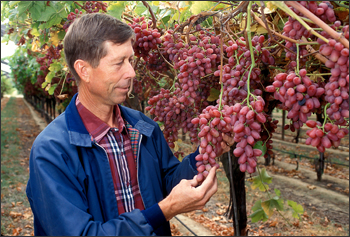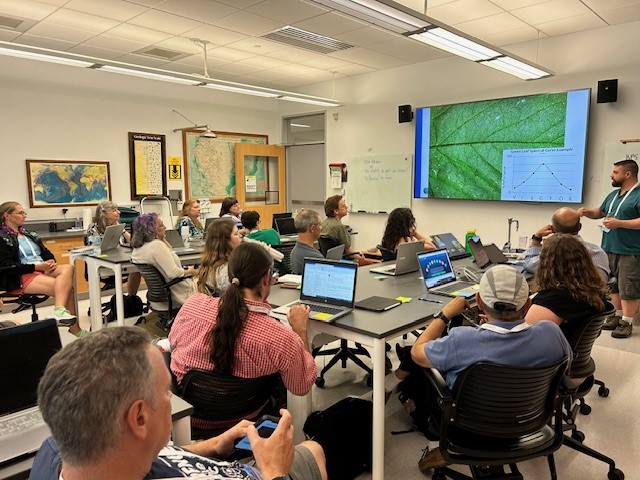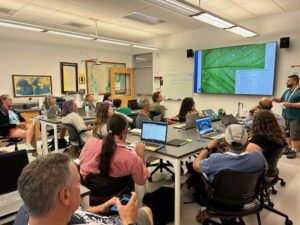
To support irrigation management decisions by agricultural producers, NASA has launched a project that uses the Terrestrial Observation and Prediction System (TOPS), a software application that processes imagery from Earth-observing satellites and delivers new sources of information to California growers. TOPS combines data from NASA satellites, with local weather observations to provide information about crop water needs. The project is an example of NASA’s efforts to address needs outside the science community, such as water management in California and the western United States.
“Growers have the best understanding of how much water is needed for their crops, based on the unique conditions associated with each field,” said Forrest Melton, a project scientist at NASA’s Ames Research Center, Moffett Field, Calif. “Our goal is to provide additional information from NASA satellites to help growers get the most value out of the water they have available.”
This new version of TOPS builds on technologies developed by prior NASA-supported research to optimize irrigation management and quality control in California vineyards. The project now is designing new ways to link satellite observations with measurements from wireless sensor networks installed in agricultural fields. By combining these two sources of information, scientists will develop a highly accurate picture of the water balance across each field, providing participating growers with a new source of information to manage their irrigation systems. The prototype system is undergoing beta-testing in collaboration with growers in the San Joaquin Valley.
The project uses data from the Landsat program, a series of Earth-observing satellites built and launched by NASA and managed by the U.S. Geological Survey. Landsat satellites have taken digital images of Earth’s continents and coastal regions for more than three decades, broadening our understanding of natural processes and human-induced changes in the landscape.
“Satellites like Landsat have a resolution of about one quarter of an acre, a meaningful scale to growers,” said Lee Johnson, a senior research scientist at California State University, Monterey Bay working on the project. “The two Landsat satellites currently operating, collect new observations for every location approximately once a week, making the information useful to growers in drawing up irrigation schedules, and for water managers tasked with ensuring that enough water is available to meet the demand from agriculture.”
Processing the vast volume of satellite data needed to produce information for agricultural producers and water managers across millions of acres of irrigated land in real time is a major challenge. To address this challenge, the project is leveraging the NASA Earth Exchange, a new resource at NASA Ames that brings together global Earth observation datasets and NASA supercomputing resources to support both fundamental and applied research.
“With the advanced computing resources at NASA Ames, we can quickly process terabytes of data and make it available to growers almost immediately,” says Rama Nemani, a senior research scientist at NASA Ames, and lead scientist for the NASA Earth Exchange project. Nemani will be a panelist at an AGU press briefing, called “Population Growth, Carbon Consumption, and Earth’s Carrying Capacity,” 11 a.m. PST, Tuesday, Dec. 14 in the Press Room (Moscone West 3001A) at AGU Conference, San Francisco.
As residential, industrial, agricultural, and environmental demands compete for limited water supplies, new sources of information will help consumers, water managers, and policy makers manage water supplies more effectively. NASA’s computing and data management infrastructure provides new capabilities to maximize the benefit of water supplies throughout California and the western United States.
Contributor: Ruth Dasso Marlaire, NASA Ames Research Center
Further Reading:
+ NASA Press Release

A Rendezvous with Landsat
NASA outreach specialists led educators through a workshop on accessing and utilizing Landsat data at the annual Earth Educators’ Rendezvous.





